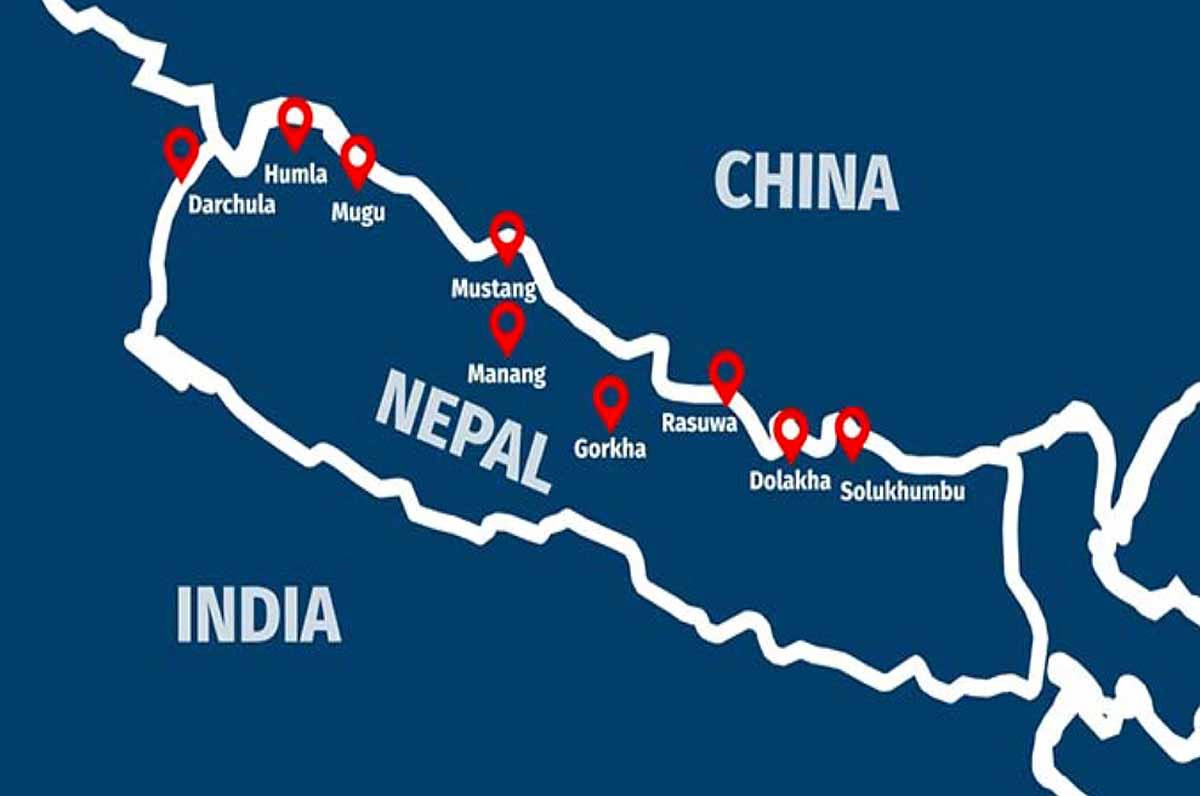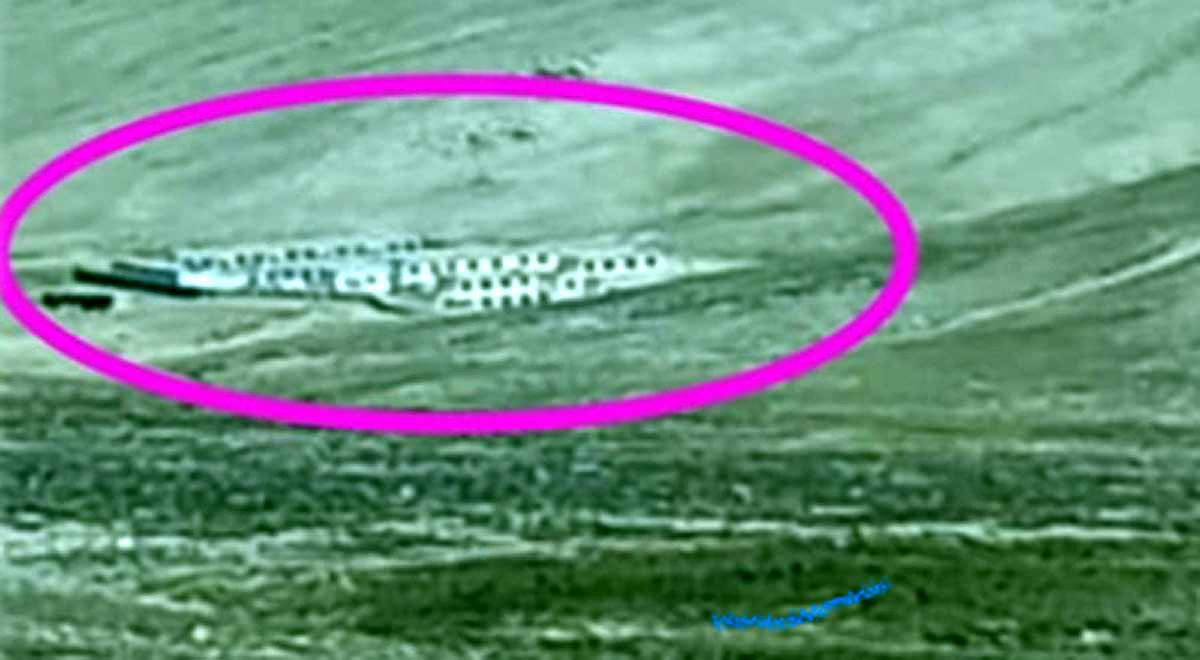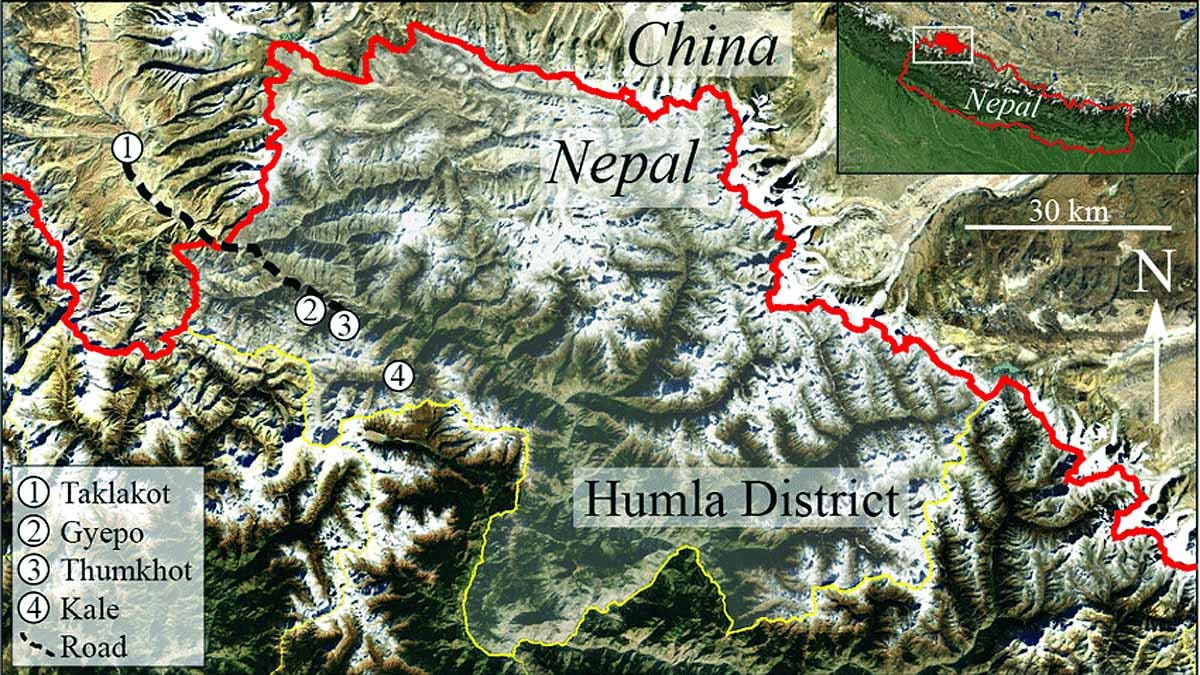China is now focused on seizing land in Nepal. The Chinese military has commenced constructing barbed wire and concrete barriers to fence the Nepal-Tibet border. The American newspaper, The New York Times, has unveiled this through satellite images. During this fencing process, China has occupied a significant portion of Nepal's territory.
This act of land acquisition followed by fencing, along with the audacious act of painting a 600-foot-long slogan on a mountain, reveals China's intentions. The slogan, "Long Live the Chinese Communist Party," is so massive it can be seen from space. China's actions make it evident that they are provoking Nepal and neighboring countries.
Border Dispute and Document Ignorance
China's current occupation is reminiscent of actions from 2021. It seems China wishes to repeat this incident. Nepali Congress leader Jeevan Bahadur Shahi released a report detailing China's occupation of a large part of Humla district near the Nepal-China border.

Source: aajtak
This report shows how China toppled eight border pillars within Nepal's territory and constructed inside it. Despite its release, the Nepali government, under political pressure from Beijing, did nothing and tried to suppress the report.
The report was eventually leaked by the BBC, but still, no action was taken. Consequently, China has intensified its activities, occupying over 11 different areas around the Nepal-China border, employing similar tactics.
What is China's 'Salami-Slicing' Strategy?
The way China is making its mark on the Nepal-Tibet border is known as the 'Salami-Slicing' tactic. This involves a series of small-scale encroachments, where land is occupied over time and claimed if no action is taken. China employs this strategy across South Asia, in the South China Sea, and along the Indian border. Currently, China is flexing its muscles in Arunachal Pradesh, renaming places it wishes to dominate despite India's strong opposition. In addition, China is building new structures in Ladakh.

Source: aajtak
Pressure on Local Tibetan Citizens and Diplomatic Silence
The Chinese army is consistently exerting pressure on ethnic Tibetan Nepalese. Villagers cannot display images of the Dalai Lama or practice their rituals. The ambition is to erase Tibetan culture and identity, a method China now applies in Nepal, threatening Nepal's sovereignty.
Despite these actions, Nepal's government remains silent, doing nothing. Nepal is, in fact, dependent on China for economic and ideological support. As such, the government turns a blind eye to these instances of territory encroachment. Meanwhile, China's military steadily appropriates lands in Nepal.
Consequences of Nepal's Inaction
If Nepal does not oppose China's actions, the entire country may soon be under Chinese control, posing threats not only to Nepal but also to India and showing its might in the South China Sea.




